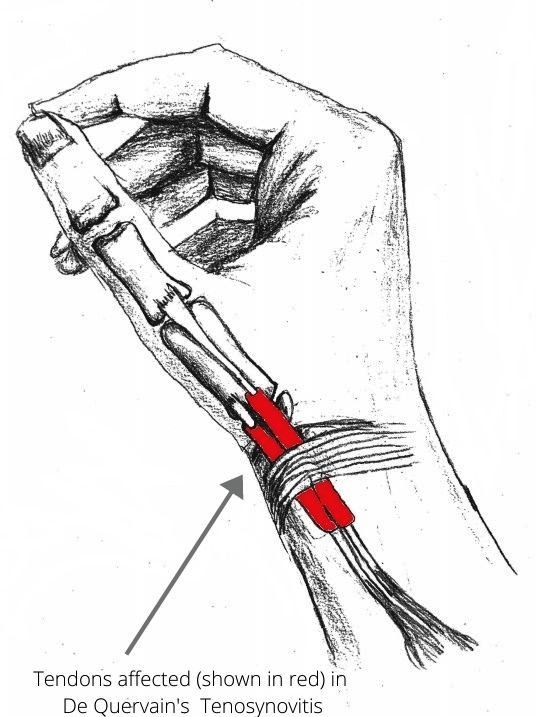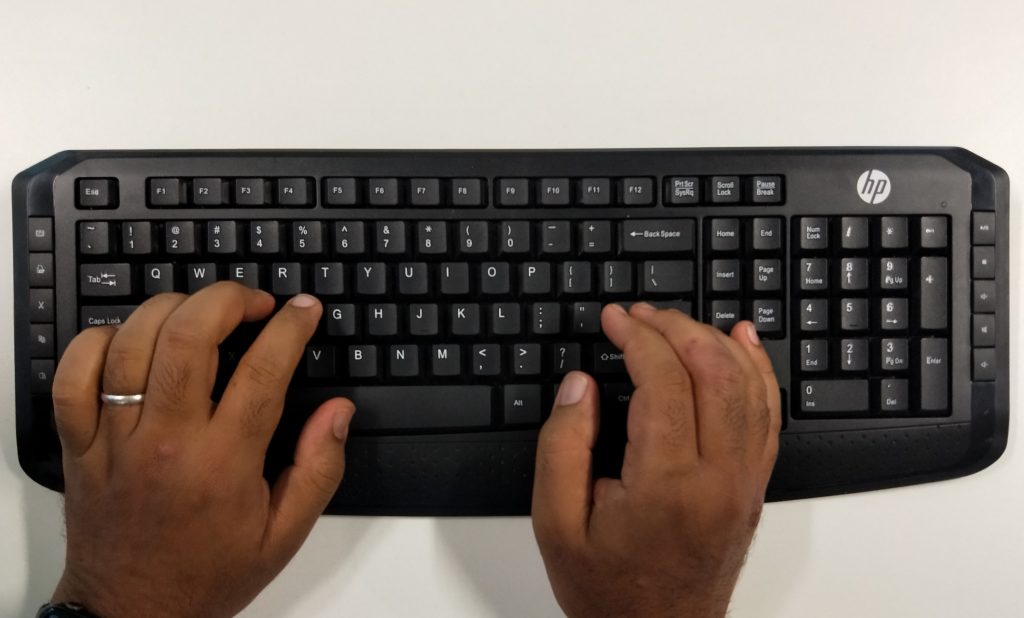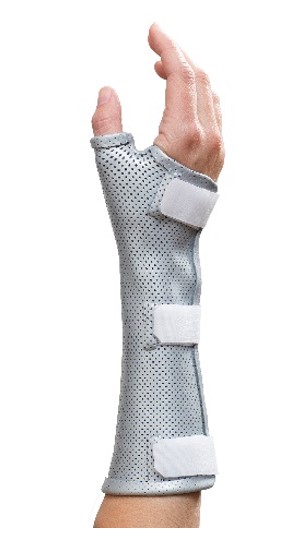ABOUT

De Quervain’s Tenosynovitis or Tendinosis is a painful condition caused by inflammation and impaired gliding of thumb tendons at the wrist. The two tendons involved are the tendons that pull the thumb up (extension) and out (abduction).
Read on to learn about the symptoms, causes and treatments for De Quervain’s Tenosynovitis.
Symptoms
If you have De Quervain’s Tenosynovitis you may experience some of these symptoms.
- pain at the base of the thumb and on the thumb side of the wrist, which may radiate to the thumb or up the forearm
- swelling, redness or tenderness at the thumb side of the wrist
- pain when grasping objects
- pain with movements of the wrist and thumb
- reduced grip strength and pinch strength when using your thumb
- reduced thumb range of movement
Causes

De Quervain’s Tenosynovitis has a number of causes. Some of these are outlined below.
- overuse or excessive strain of the wrist and thumb from work, sport or hobbies
- it is often associated with pregnancy and breastfeeding, this may be due to a combination of factors including repetitive lifting, the prolonged holding of a new baby as well as hormonal factors
- an injury such as a direct impact to the thumb side of your wrist and forearm
- inflammatory arthritic conditions
Risk Factors
Whilst risk factors may not dictate that you will develop De Quervain’s Tenosynovitis, they may increase the likelihood of developing the condition. Some risk factors for developing De Quervain’s Tenosynovitis are outlined below.
- repetitive day-to-day work, sports, hobbies (e.g. working on an assembly line, tool use such as hammering, golfing, typing)
- pregnant women or new mums
- having an inflammatory arthritic condition
Non-Surgical/ Conservative Management Options

The goal of treatment for De Quervain’s Tenosynovitis is to reduce swelling and pain to allow normal thumb movement. Our therapists can assess you for the presence of De Quervain’s Tenosynovitis and if appropriate fit you with a splint to settle symptoms and pain. They will also provide education about possible causes and preventative strategies to help, as well as other treatment options available. See below for a list of possible interventions we may recommend:
- wearing a specially fitted wrist and thumb support splint, soft splint or taping to provide rest and protection for the inflamed tendons
- once symptoms settle graded Occupational/Hand Therapy exercises to help regain movement and strength
- discussing alternative ways of performing specific aggravating activities to prevent recurrence of symptoms
SURGICAL TREATMENT
If symptoms do not settle with splinting and rest, your GP or Specialist may recommend surgical release or cortisone injection to help settle swelling and prevent tendon thickening. At Specialised Hand Therapy, we also see many patients following De Quervain’s release or injection for management and guidance for resuming your normal activities.
Specialised Hand Therapy Services Can Help
At Specialised Hand Therapy Services, De Quervain’s Tenosynovitis is a common condition we see. If you are experiencing pain or discomfort in your wrist or thumb, then book in with one of our friendly therapists for assessment and advice.
